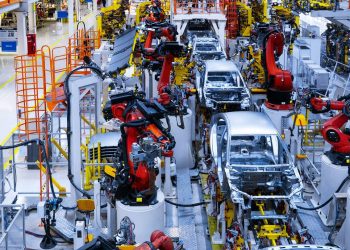No products in the basket.
Increasing air pollution in Thailand caused by hazardous particulate matter known as PM2.5 has led many people to ask where this threat is coming from.
According to several respected scholars and a study by the Pollution Control Department, diesel vehicle fuel exhaust emissions is one of the main causes. (Another is the burning of forest under-growth and agricultural clearing).
PM2.5 is a mixture of liquid droplets and solid particles that can include dust, soot and smoke. It is one of the main pollutants included in the Air Quality Index measure of threats to health. A reading of below 30 is safe; above 150 is considered unhealthy.
A number of proposals have been made for long-term solutions to the problem of pollution caused by vehicle emissions. They include the raising of taxes on vehicles responsible for greater levels of pollution and the promotion of policies to support the development of clean energy vehicles, including electric vehicles as an “alternative” to the internal combustion engine.
Government has made policy moves in this direction in the past, but implementation has been piecemeal. There has been no proper cooperation or coordination among state agencies. Clearly, while air pollution remains a threat to the health and wellbeing of Thais, the status of electric vehicles is still just one “option”.
The Finance Ministry’s Excise Tax Department has introduced excise tax relief on new vehicles based on carbon emissions, but there are still significant weaknesses in the policy. In practice, however, it seems different vehicle technologies are being treated differently. For example, the excise tax structure still favours onetonne pick-up trucks, Thailand’s industrial product champion, responsible for high emissions. In contrast, taxes are imposed on new technology hybrid vehicles separately, increasing in line with their pollution emission levels. If the government really wants to use excise tax to control carbon emissions and pollution, it needs to be technologically neutral. In other words, the tax should increase with emission regardless of the vehicle’s technology.
But even restructuring the current excise tax system for vehicles would not be enough to address the problem. The government should charge higher annual taxes for used cars. This would encourage consumers to steer away from driving old vehicles with high emissions (partly because they become more and more inefficient and therefore more polluting the older they get) towards cars with better technology.
But in reality, annual taxes for used cars decline with the age and value of the vehicle, discouraging consumers from switching to new cars with better technology. The effect is the opposite of what is needed to control carbon emissions and pollution. This can be clearly seen from the fact that the average life expectancy of personal pick-up trucks, more than 90% of which use diesel fuel, has increased from 6.9 years in 2007 to 9.3 years over the past decade.
If the government really wants to promote low-emissions vehicles, in particular electric cars, all policies, including industrial promotion and environmental policies should be pushing in the same direction. Excise tax for new vehicles and annual taxes for used vehicles should be technologically neutral and increase with the emission levels. A successful policy to drive up demand for environmentally friendly vehicles would in turn make the price of clean energy vehicles more competitive. As the virtuous cycle continues, the rise in demand would attract more foreign investment into the clean auto industry into Thailand.
To prepare Thailand’s automotive industry for a cleaner, alternative path, manufacturers and policy makers should engage in several action items. In the early stages of policy adjustment, auto parts manufacturing in Thailand needs to focus more on the needs of the electric vehicle segment, such as batteries and motors. In addition, the government should temporarily waive import tariffs on batteries and motors to make the product price more competitive to the conventional car, and stimulate the overall local market for electric vehicles. Previously, this measure worked very well when the government tried to promote hybrid vehicles, lowering the price in the market and expanding the user base.
Moreover, auto and auto parts manufacturers need to improve their competitiveness, developing materials that reduce the weight of the cars those parts go into. Research by McKinsey, the global consultancy, found that it is likely that vehicles in the future will make more use of aluminium and carbon fibre thanks to trends in environmental and conservation policies. On the infrastructure front, i.e. EV charging stations, policy should proceed on a trial basis to accommodate batteryonly vehicles. The government should seek private sector involvement to reduce risk and minimise any subsidies that might be involved.
If Thailand were to seriously address all these factors, clean energy vehicles would no longer be considered “alternative”. The final result would be cleaner air. And the harzadous dust or PM2.5 would not be the “inevitable” for people as it is now.
Wichsinee Wibulpolprasert is a research fellow and Sunthorn Tunmuntong is a researcher at Thailand Development Research Institute (TDRI). Policy analyses from the TDRI appear in the Bangkok Post on alternate Wednesdays.
WICHSINEE WIBULPOLPRASERT SUNTHORN TUNMUNTONG
First Publish: Bangkok Post on Wednesday, February 27, 2019
Discover more from Thailand Business News
Subscribe to get the latest posts sent to your email.














